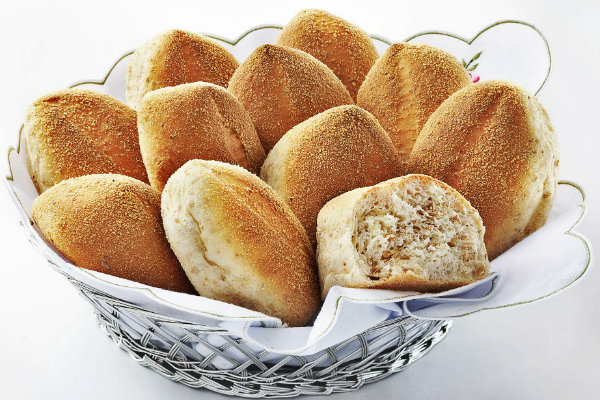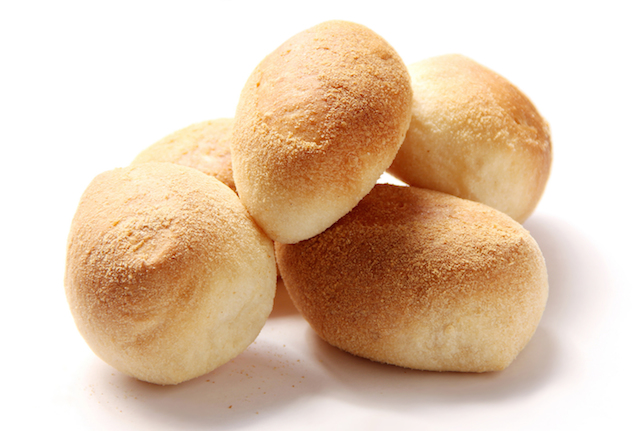by Neria Nidea-Soliman
as seen on the June 2019 issue
In commemoration of our forthcoming Philippine Independence Day Celebration on June 2019, I am most obliged to write about our most popular and most loved Pinoy Pan De Sal which is also called Pan de sal Almusal or Agahan (breakfast bread). To our Filipino Spanish grandparents, the pan de sal is also known as Salt Bread. Every country has a nationally-identified bread: Croissant in France, Focaccia in Italy and Sour dough for the Americans.

Pan De Sal is the traditional Filipino bread made of flour, eggs, yeast, salt and sugar. It is the most popular yeast-raised bread in Manila and all the regions of the Philippines. The raw bread is shaped by rolling the dough into long logs and cut into 2 inches in length.
This bread is also called the “Bread of the Masa” being the most popular of all the hundreds variety of Filipino bread.
Food critic Doreen Fernandez, who was my professor at St. Scholastica’s College Manila, made a review of my first book in 1986. She said: “pan de sal is the bread of our history, the core of our culture, at the heart of our tastes.” Furthermore, she said that “nowadays, the battle is on for the best pan de sal in the market.” Indeed, the Filipino ingenuity is challenged to create the best pan de sal in the Panaderia (bakery).
Pan de sal means “bread of salt” in Spanish, where a pinch of salt is added to the dough. It was introduced to the Philippines in the 16th century during the Spanish Era as the Spaniards’ answer to the French Baguette. The original pan de sal was made with wheat flour, so it was hard and crusty outside, airy and has a pillow soft texture inside, a far cry from the doughy bread we have these days.
Pan–de–sal is Portuguese in origin and the most popular bread in Portugal to this date. Today, Manila boasts of having 196 flavours or recipes of pan de sal. I was talking to a nun while l was in Legazpi City recently who made mention that her favourite bread is the Malunggay Pan de sal. She is Sister Regina B. Sampaga, MCST of the order of the Missionary Catechists of St. Therese of the Infant Jesus. She reckons that it would be best if the malunggay leaves are fresh, not dried. I agree with her if only to keep intact the nutritive value of a green leafy vegetable that is high in vitamin A.
I met the good Sister with her Mother Superior during a birthday celebration at the prestigious Rebustillo Residence attended by no less than the Bishop, priests and the grand matriarch ━ my artist relative Delia Napay Rebustillo of Albay along with her daughter Dehna Sevilla and the latter young secular priest son, Fr. Sevilla. Ω

Neria Nidea-Soliman, a resident of Sydney, is a Bicolana from Legazpi City, Albay. She holds a Bachelor of Arts degree in Nutrition and Food Science from the St. Scholastica’ s College in Manila. Among the books she has written are Magayon, a Taste of Bicol and The Chef’s Best Mate. She was Food and Beverage Manager of Mayon Imperial Hotel in Legazpi, Albay and a past president of the Philippine Community Council of New South Wales
